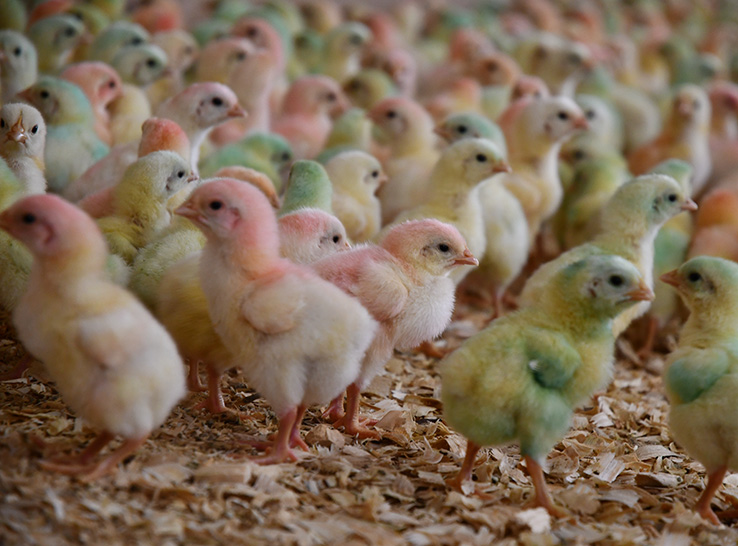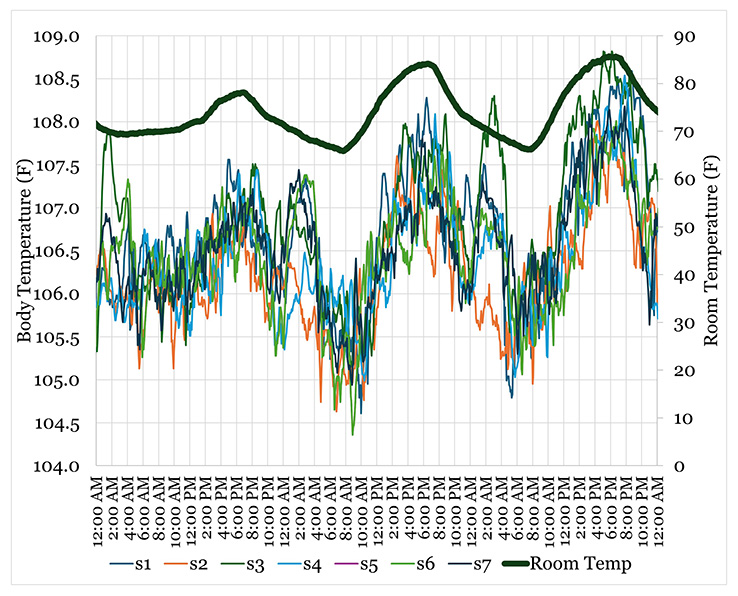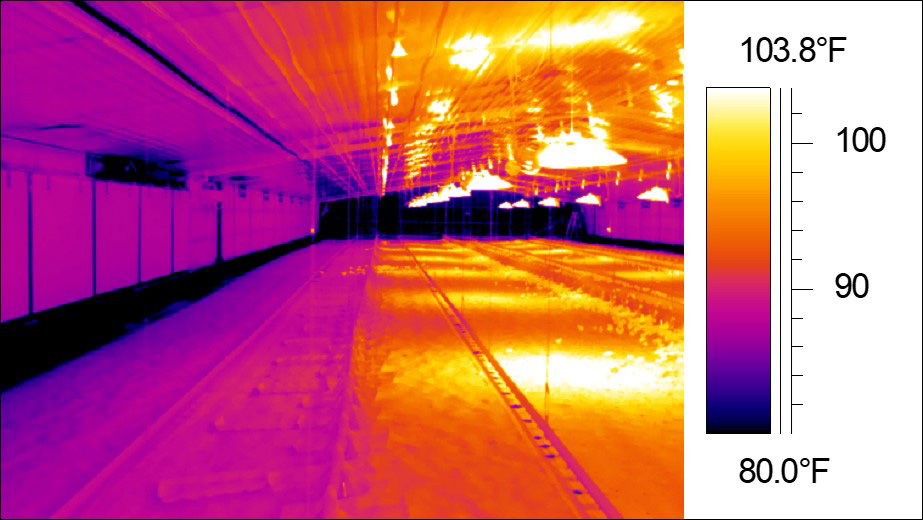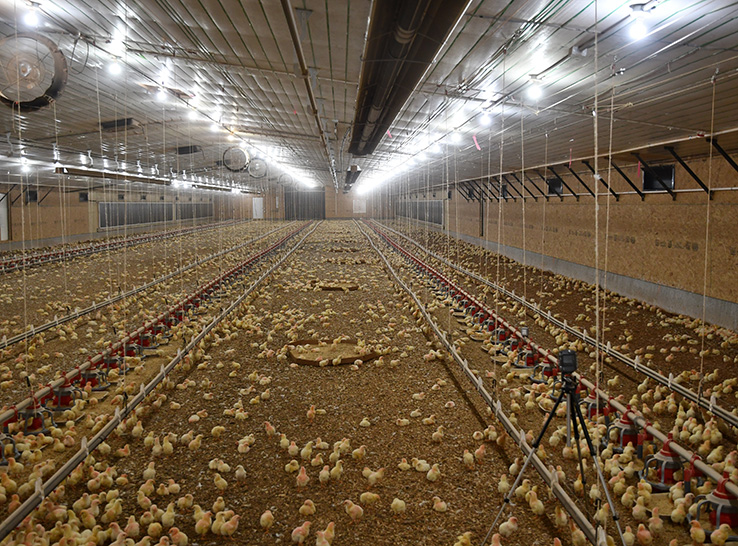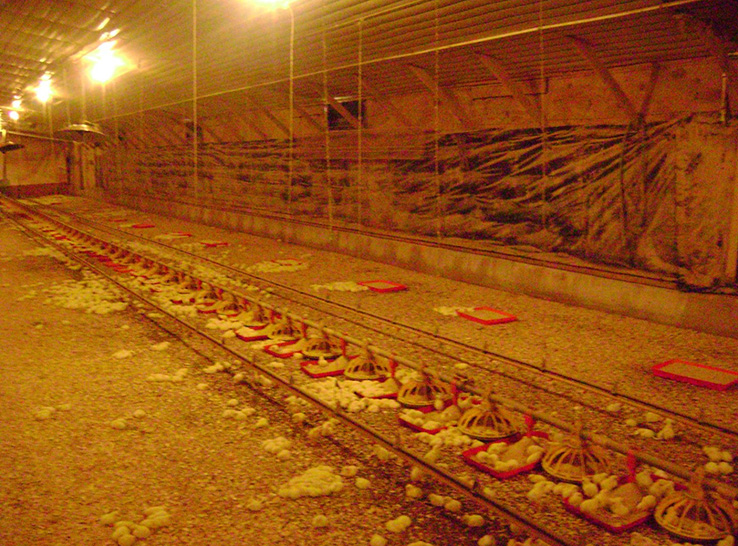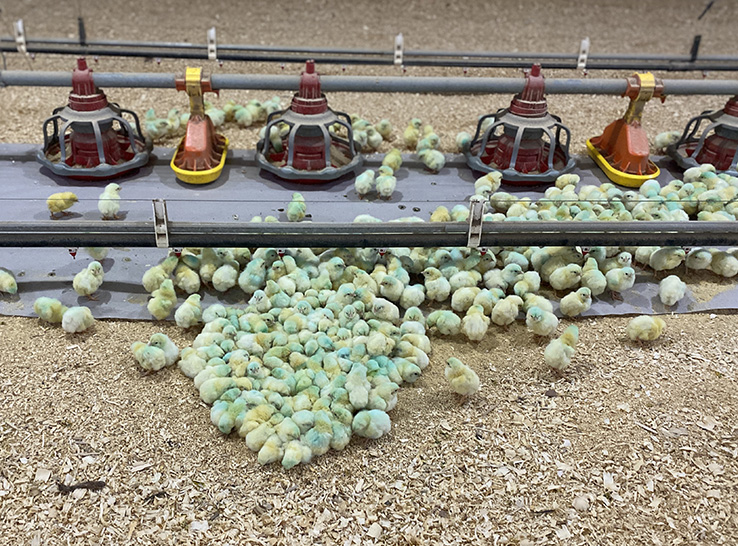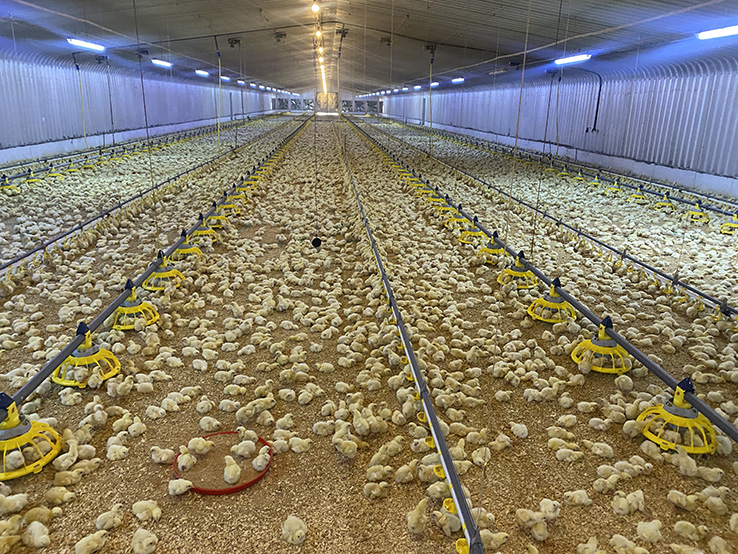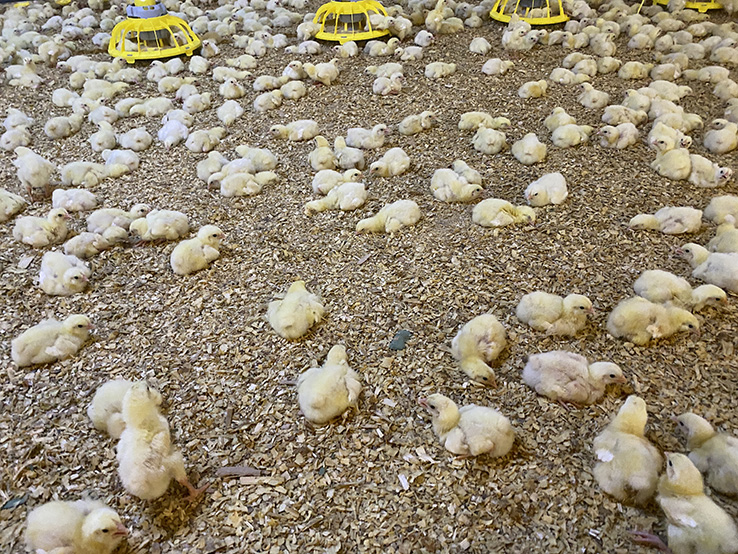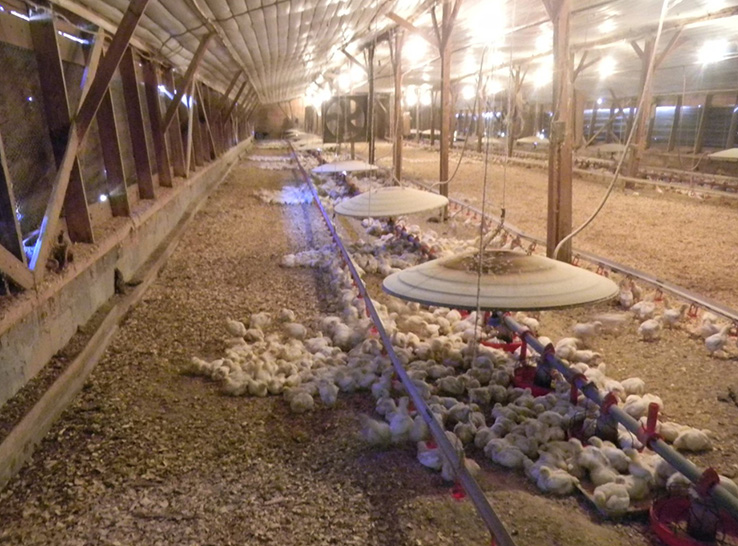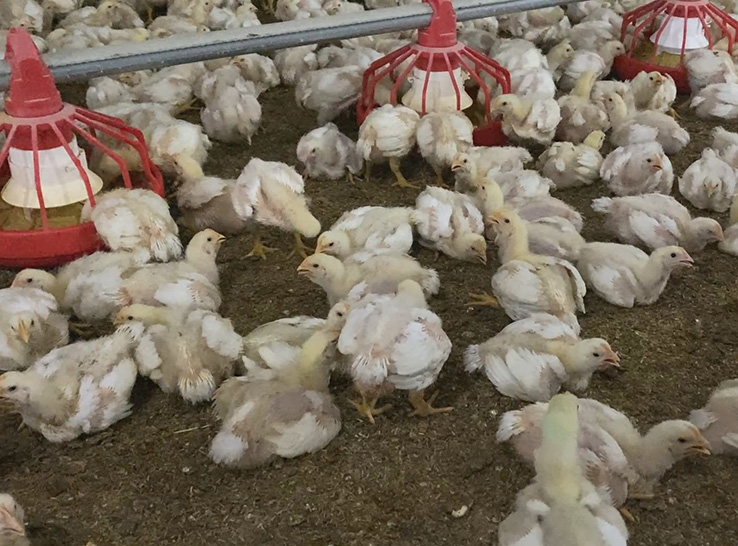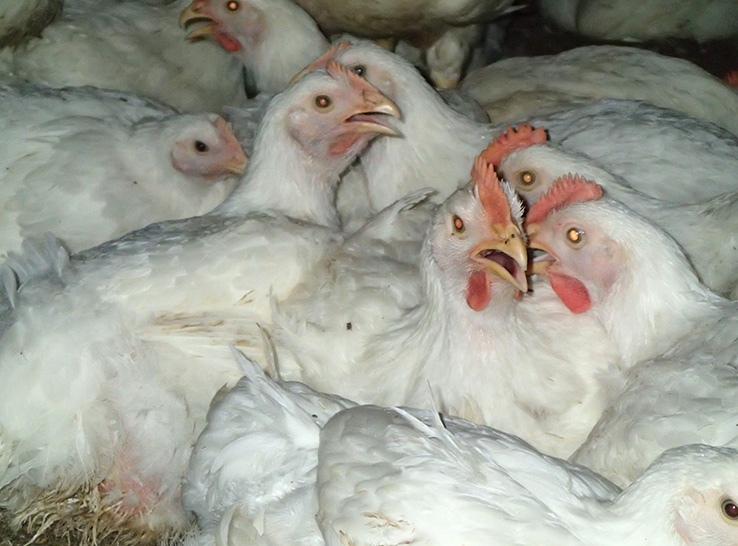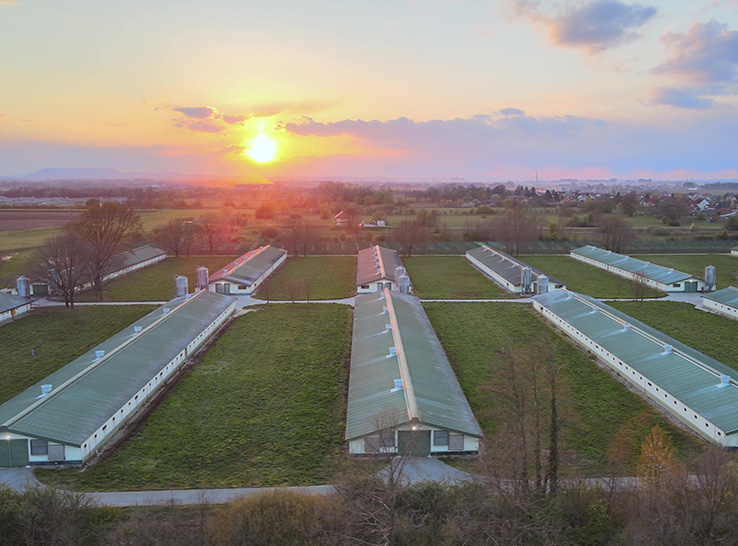By Michael Czarick
Extension Specialist – Engineering
University of Georgia
Department of Poultry Science
You might be surprised to learn that poultry-house target temperatures are more flexible than many believe. At any given bird age, a relatively wide range of acceptable temperatures can be maintained, which can result in optimal growth rates, feed conversion and bird health.
The range of acceptable temperatures is generally known as a bird’s thermoneutral zone — in short, the range of air temperatures in which it can maintain its body temperature with minimal effort. It doesn’t have to eat extra feed to stay warm or pant to keep itself cool.
A bird can sit and do nothing, and its body temperature will remain relatively constant, as will its performance.
Effect of age
A bird’s thermoneutral zone changes with age. Not only do young birds require higher air temperatures than older birds, but their thermoneutral zone is narrower than older birds. Because young chicks have an immature thermoregulatory system, it is generally thought their thermoneutral zone is around 4o F wide.
Older birds have a mature thermoregulatory system and have a much wider thermoneutral zone, which some studies indicate may be as much as 8° F to 10o F.
Setting target temperatures
How does a bird’s thermoneutral zone factor in with traditional target temperatures? You can think of a bird’s thermoneutral zone as the house temperature between when the heat is set to increase the temperature and when the fans are set to decrease the temperature.
For younger birds that are easily chilled, we need to set the “heat on” temperature fairly close to the target temperature, within a degree or so. Cooling fans should be set to come on 3 degrees above the set temperature because younger birds are more tolerant of higher air temperatures.
Older, well-feathered birds are much more capable of handling a house that is a little too cool than a little too warm. So, the heat may not need to come on until the house temperature drops 6 or more degrees below the set temperature.
On the other hand, because older birds are well-feathered, cooling fans may need to come on a degree or two above the set temperature.
A complicating factor is that not all the birds have the same thermoneutral zone. Differences in bird size, growth rates, feathering, genetics and health, among other factors, can result in differences in bird heat production/heat loss; these differences, which affect a bird’s body temperature, will, in turn, affect what range of air temperatures a bird will find most comfortable.
Differences in acceptable temperatures are reflected in the natural variation in bird body temperatures (Figure 1). It’s not uncommon for bird body temperatures to vary a degree or more at a given air temperature.
As a result, as house air temperatures increase, some birds will become heat-stressed sooner than others, which is very clear to see on any broiler farm during hot weather. In the morning, some birds will pant long before others do.
Influence of radiant heat, environment
Variations between individual birds’ thermoneutral zones can also be seen in houses with radiant heaters and young chicks. Radiant heaters will produce a range of floor temperatures. Floor temperatures near a radiant brooder or tube heater are typically 10° F to 20o F warmer than those areas in a house 10 feet or more from a radiant heater (Figure 2).
During brooding, farm managers will often see some chicks resting comfortably close to a radiant heater. In contrast, others will favor areas far from the radiant heaters where floor temperatures are significantly lower. This is one of the advantages of houses with radiant heaters — chicks can select their location in a house based on their thermoneutral zone.
It is also important to note that a bird’s thermoneutral zone will fluctuate with environmental variables, such as relative humidity and air speed. The higher the relative humidity, the warmer a bird will tend to feel, and the lower the house temperature will need to be for them to remain in their thermoneutral zone.
Air speed will tend to increase heat loss from the birds, making them feel cooler and enabling them to be comfortable at higher air temperatures and humidities.
Evaluating thermal comfort
No textbook or management manual will ever be able to define a bird’s thermoneutral zone precisely; there are simply too many variables that affect a bird’s thermal comfort. Therefore, it is essential to keep in mind that any target temperature is just a starting point and will need to be adjusted based on observing bird behavior.
Young chicks should generally be seen forming small, loose groups that are scattered evenly throughout the house (Figure 3). The larger the groups the chicks form, the more likely the house temperature is below their thermoneutral zone (Figures 4, 5).
On the other hand, if chicks are perfectly spread out and not touching one another, the house temperature is likely above their thermoneutral zones (Figure 6). Obviously, birds lying out flat and/or panting are above their thermoneutral zone and in need of cooling (Figure 7).
As birds age and floor space becomes limited, it can be more difficult to determine if they are comfortable. Birds forming large groups, crouching and fluffing their feathers are probably too cool (Figure 8). A low level of activity can be a sign that the birds are cool or are simply comfortable.
Determining if the birds are above their thermoneutral zone is relatively easy with older birds. Panting, spreading their wings and avoiding other birds are classic signs that the birds are too hot (Figures 9,10).
Closing thoughts
Though there are numerous recommendations on the optimal house temperatures to be maintained over the course of a flock, remember that a bird’s thermoneutral zone varies significantly with age, feathering, air speed, relative humidity and other factors.
Making matters more complicated is that not all the birds in a house will be comfortable at the same air temperature.
As a result, poultry-house environmental control ends up, at times, being as much of an art as it is a science. The simple truth is that spending time in a house watching what the birds are doing will tell you more about what they need than any manual, scientific paper or textbook.
Editor’s note: The opinions and/or recommendations presented in this article belong to the author and are not necessarily shared by Modern Poultry.


